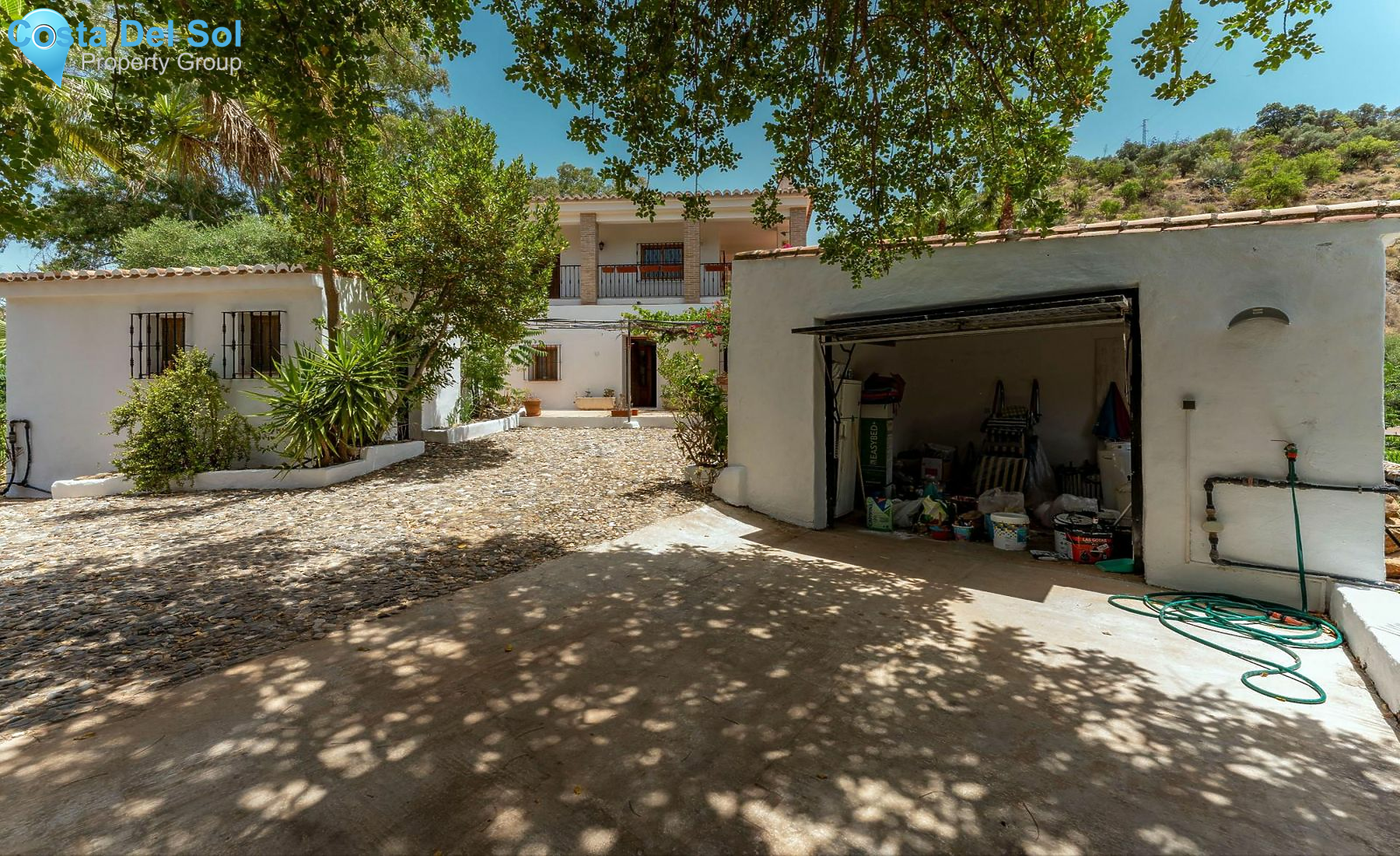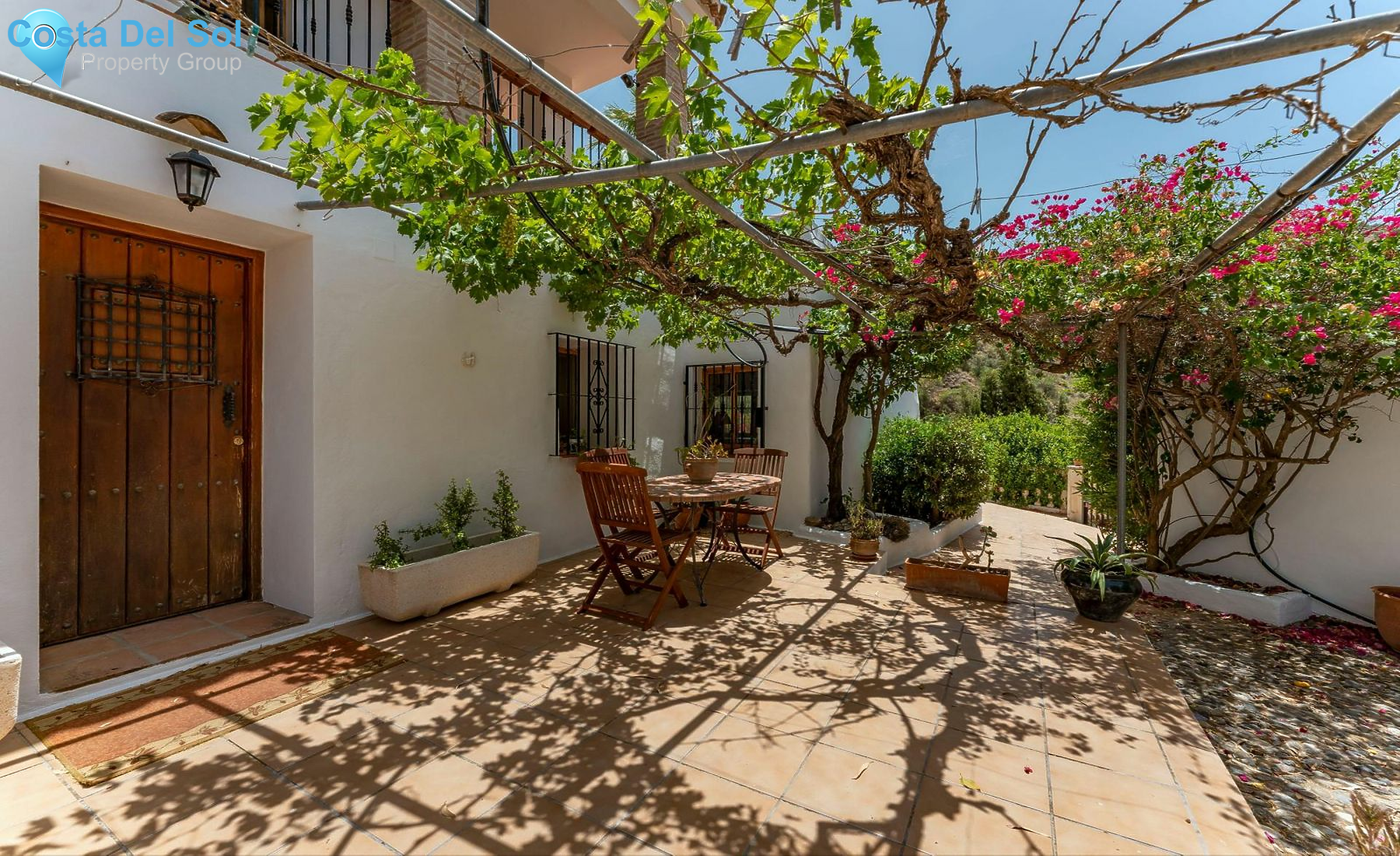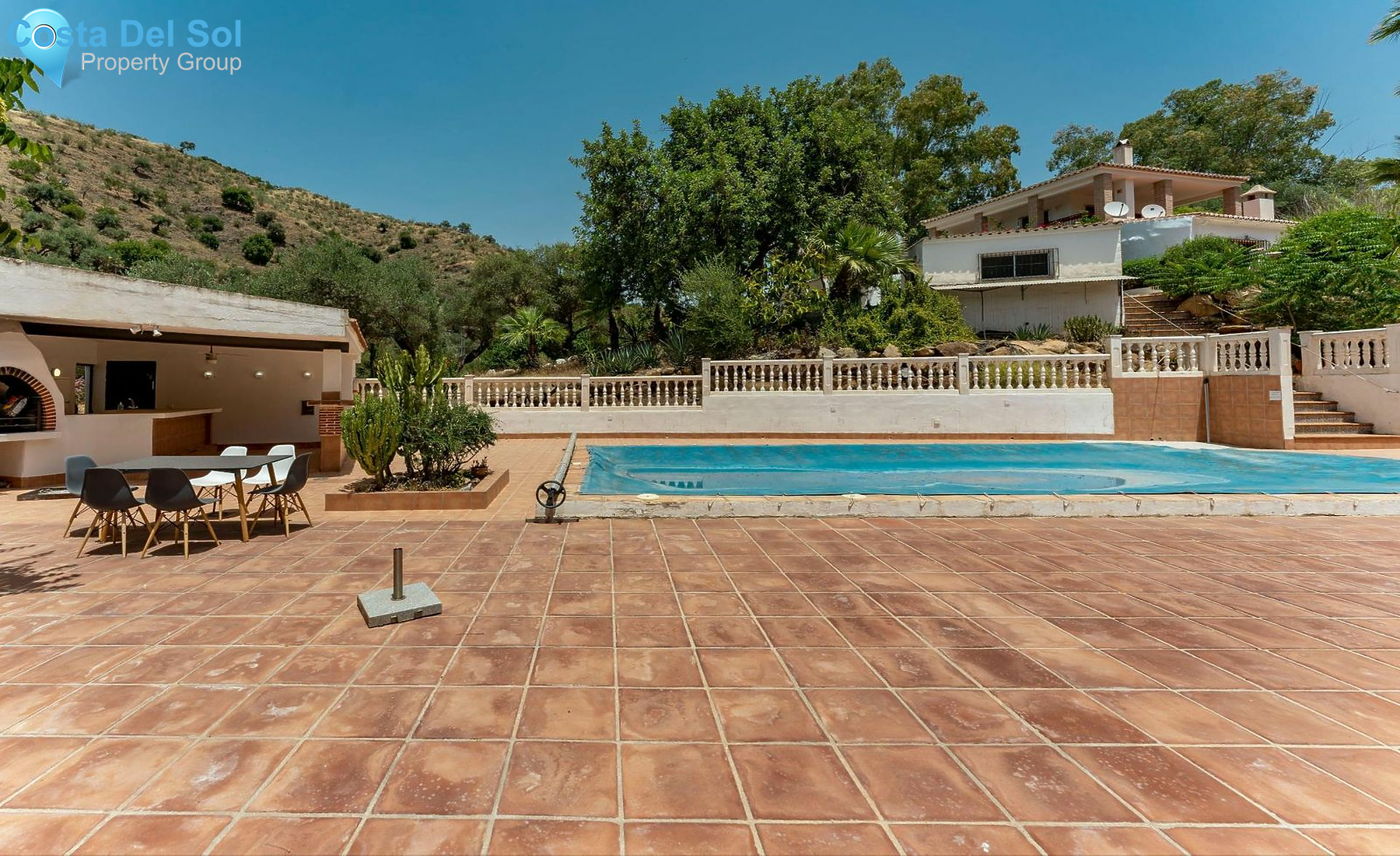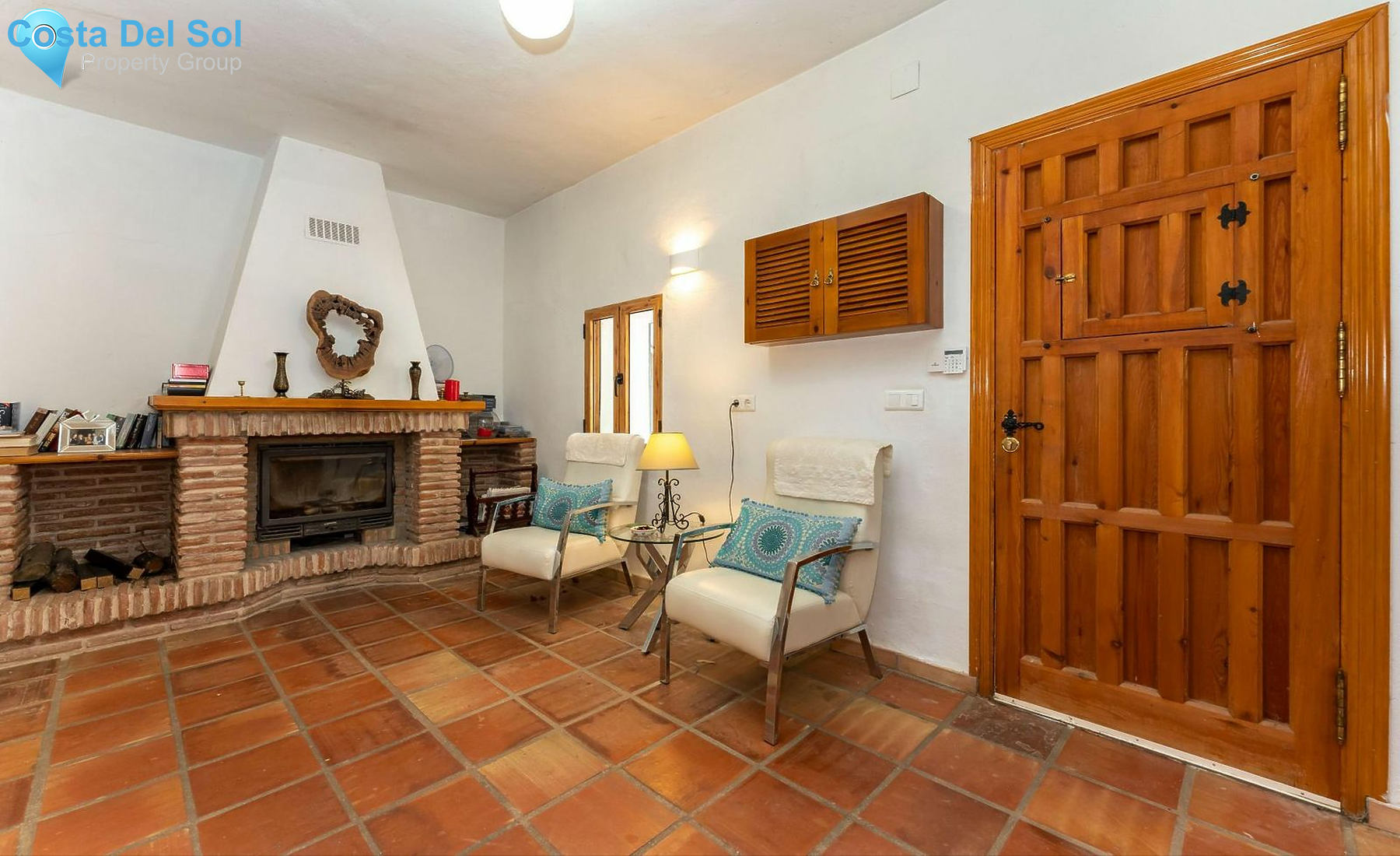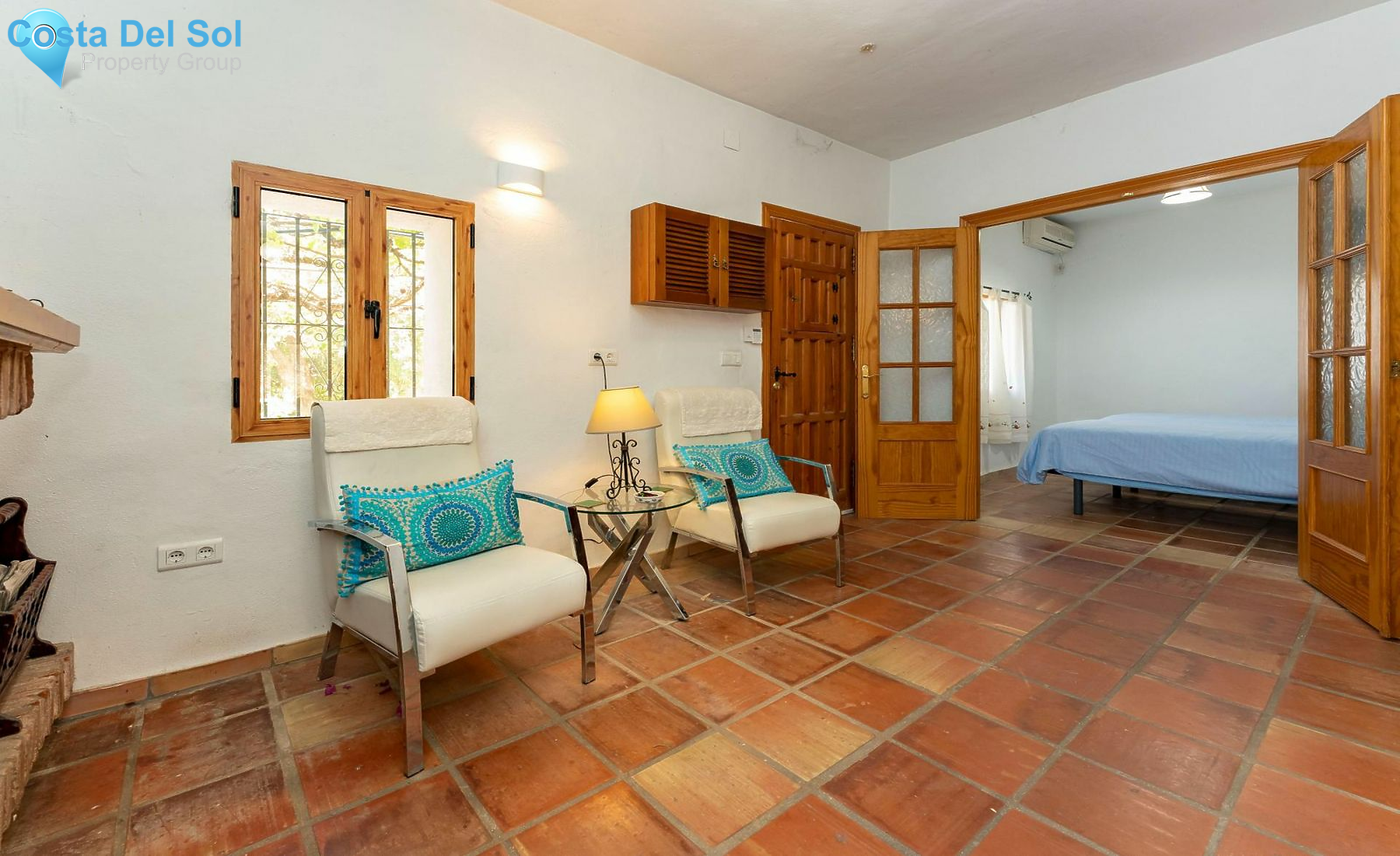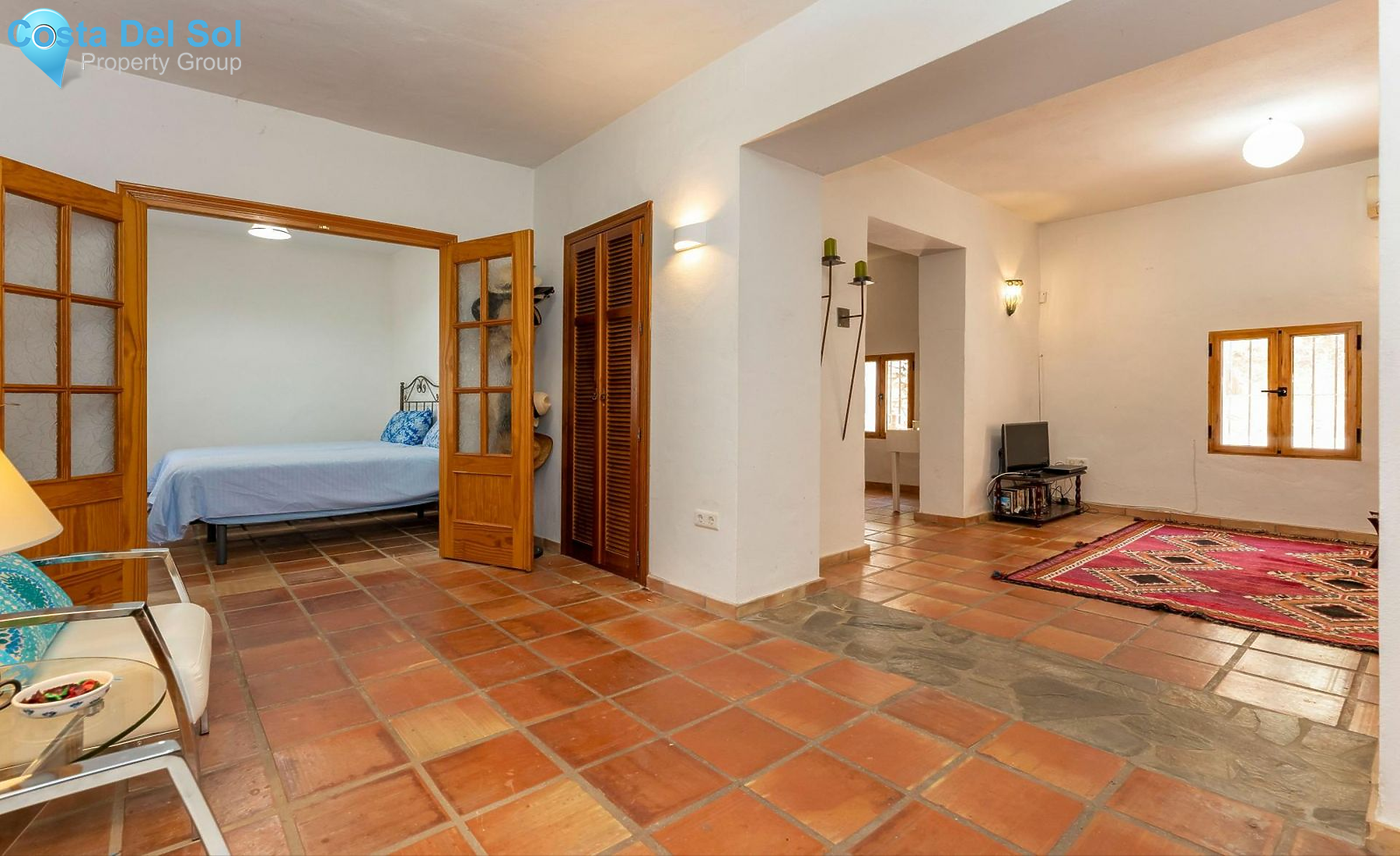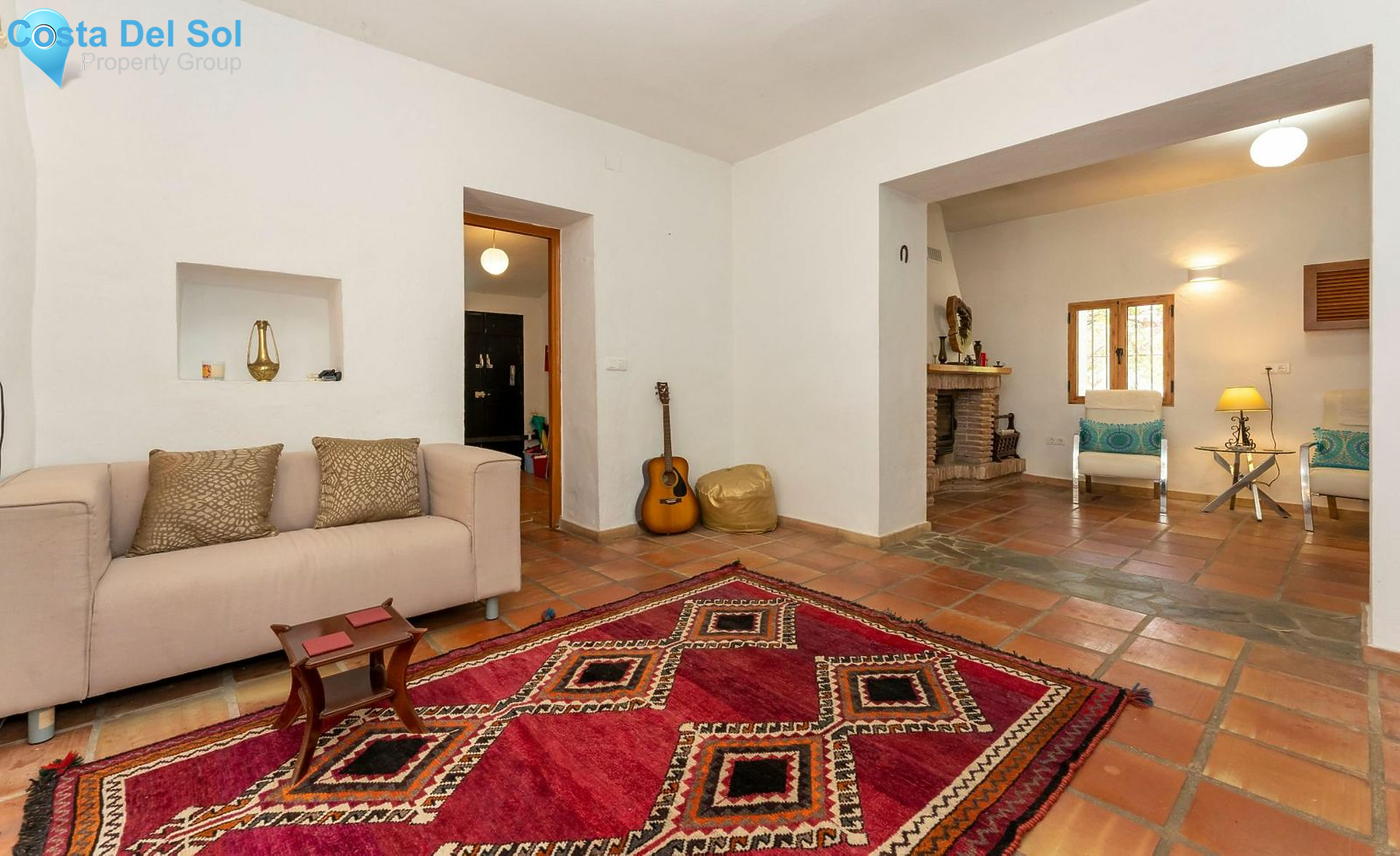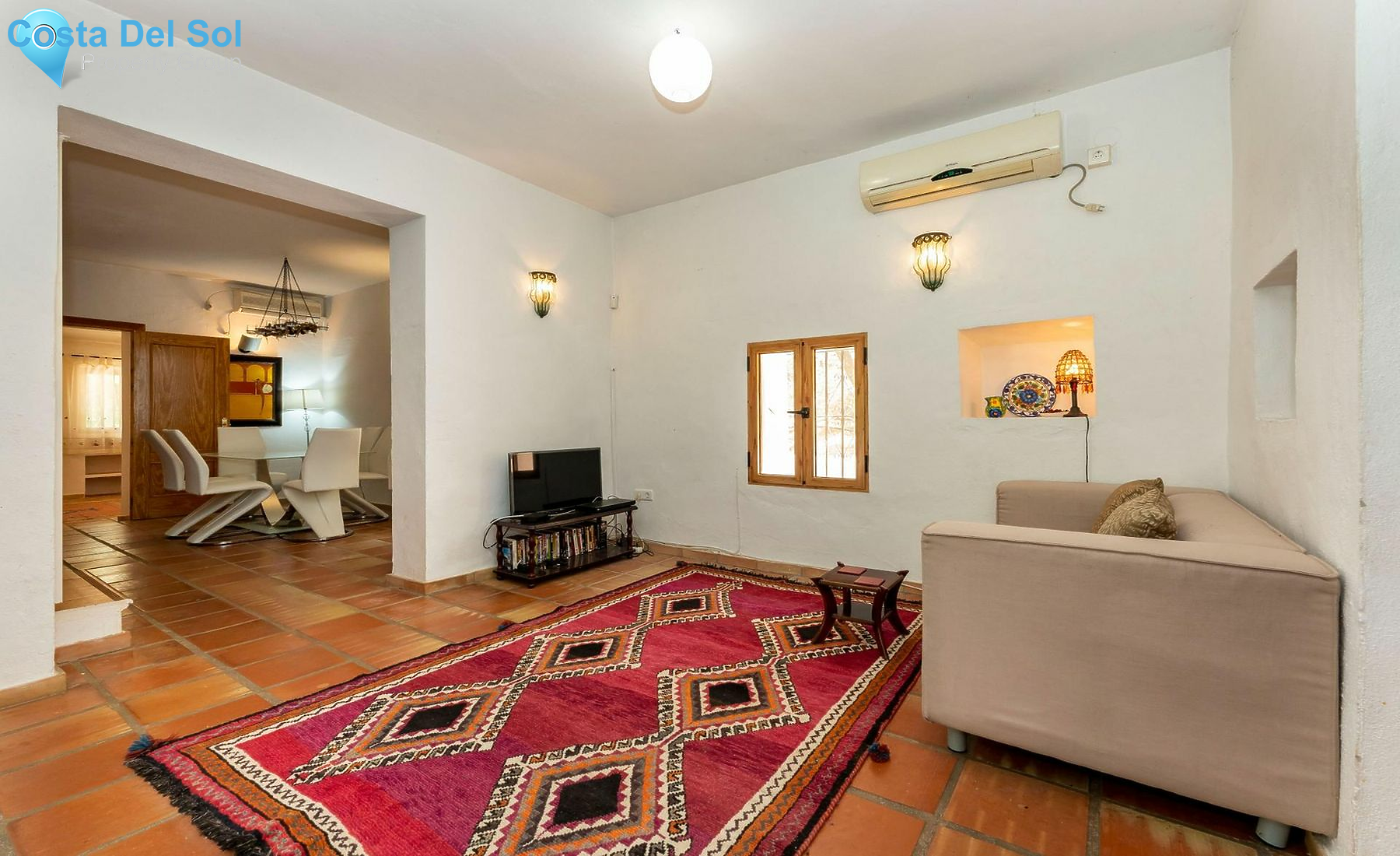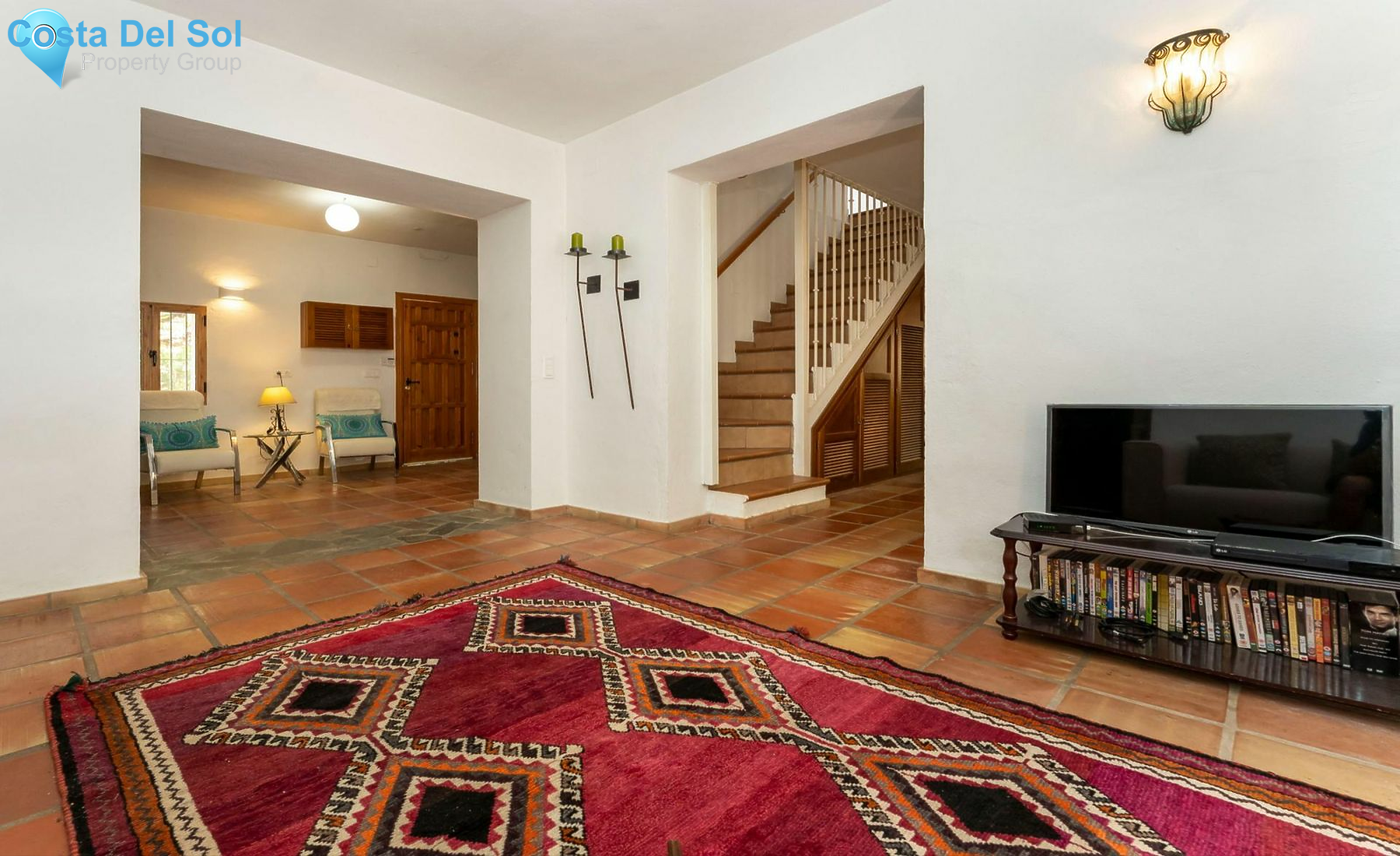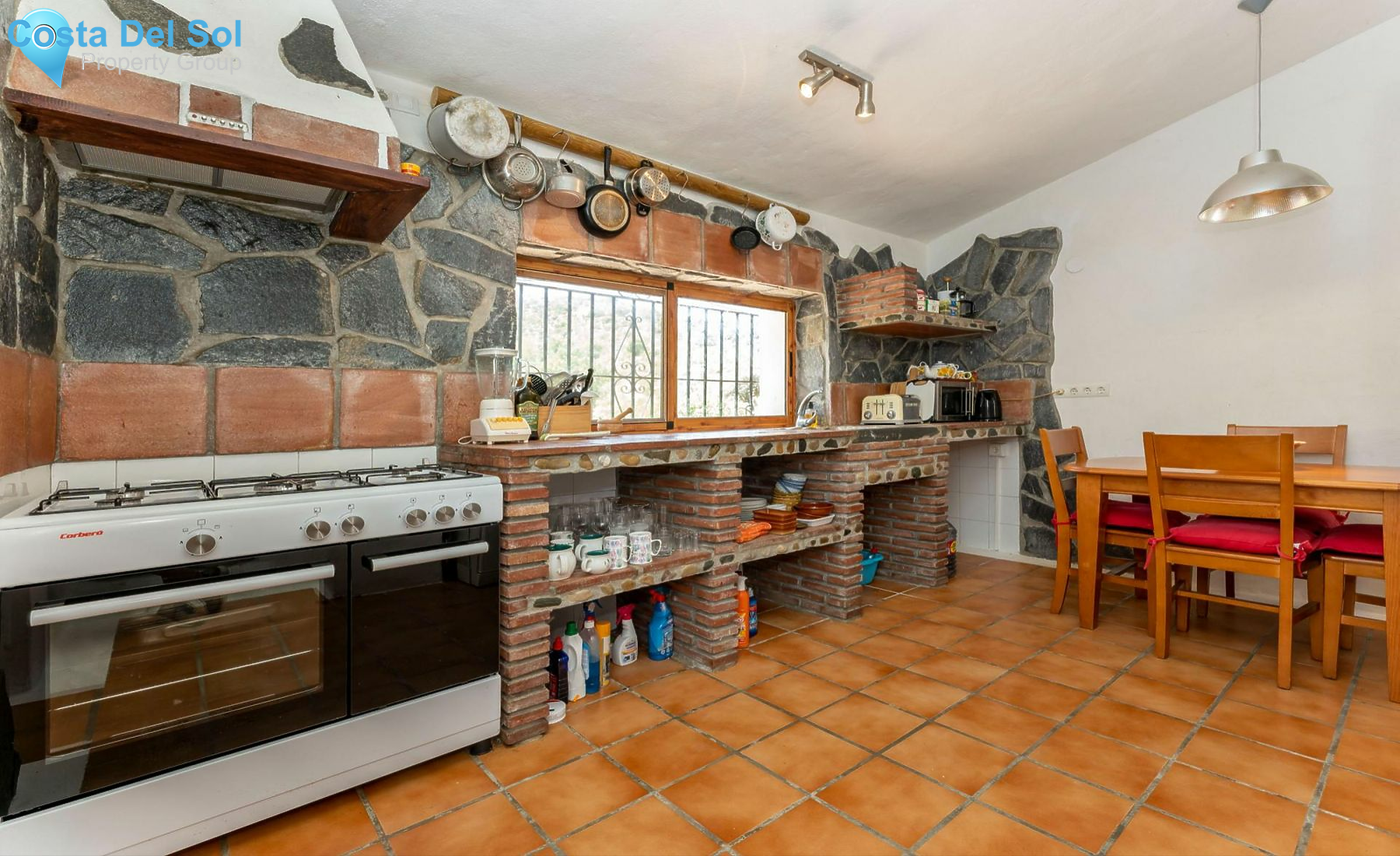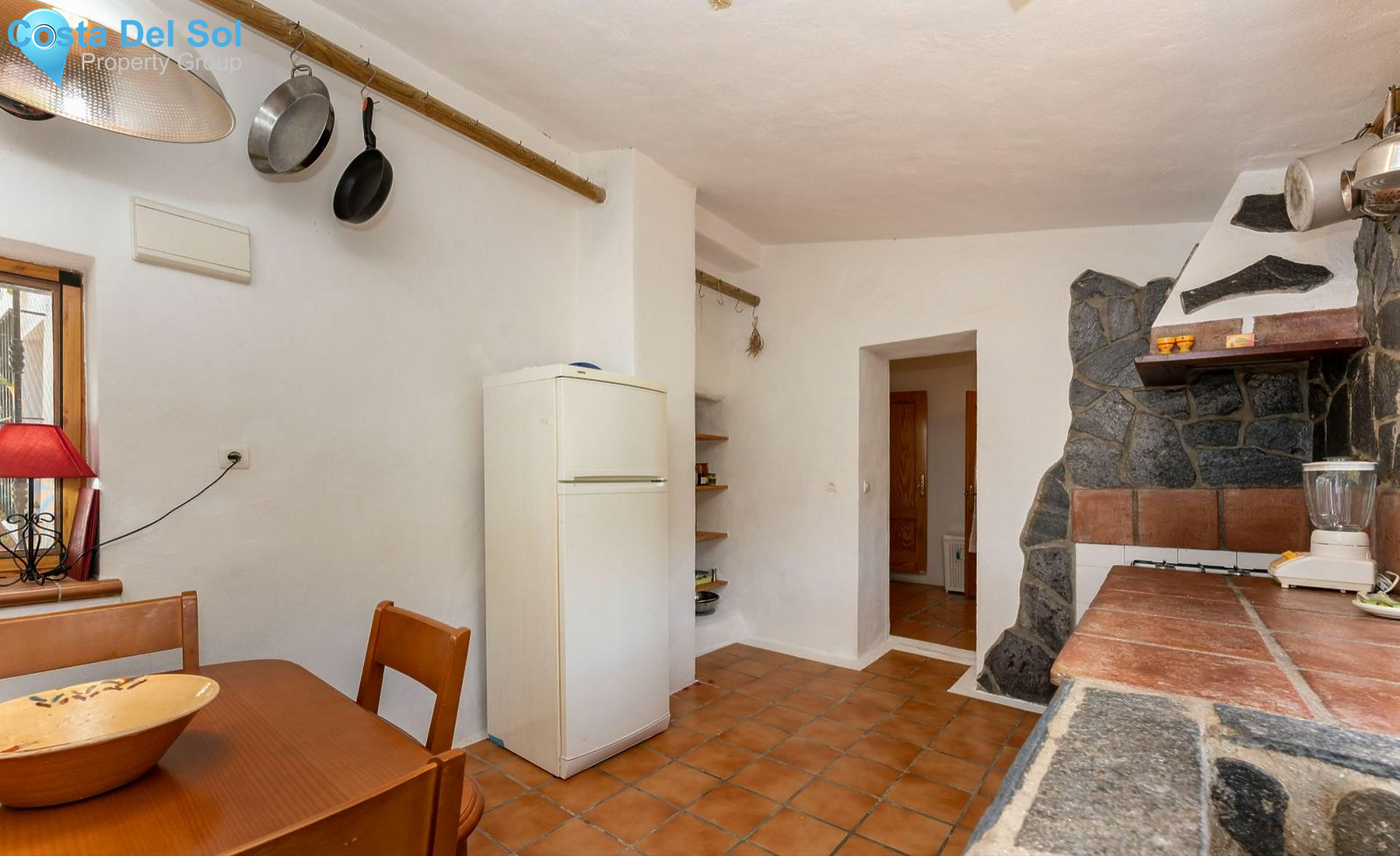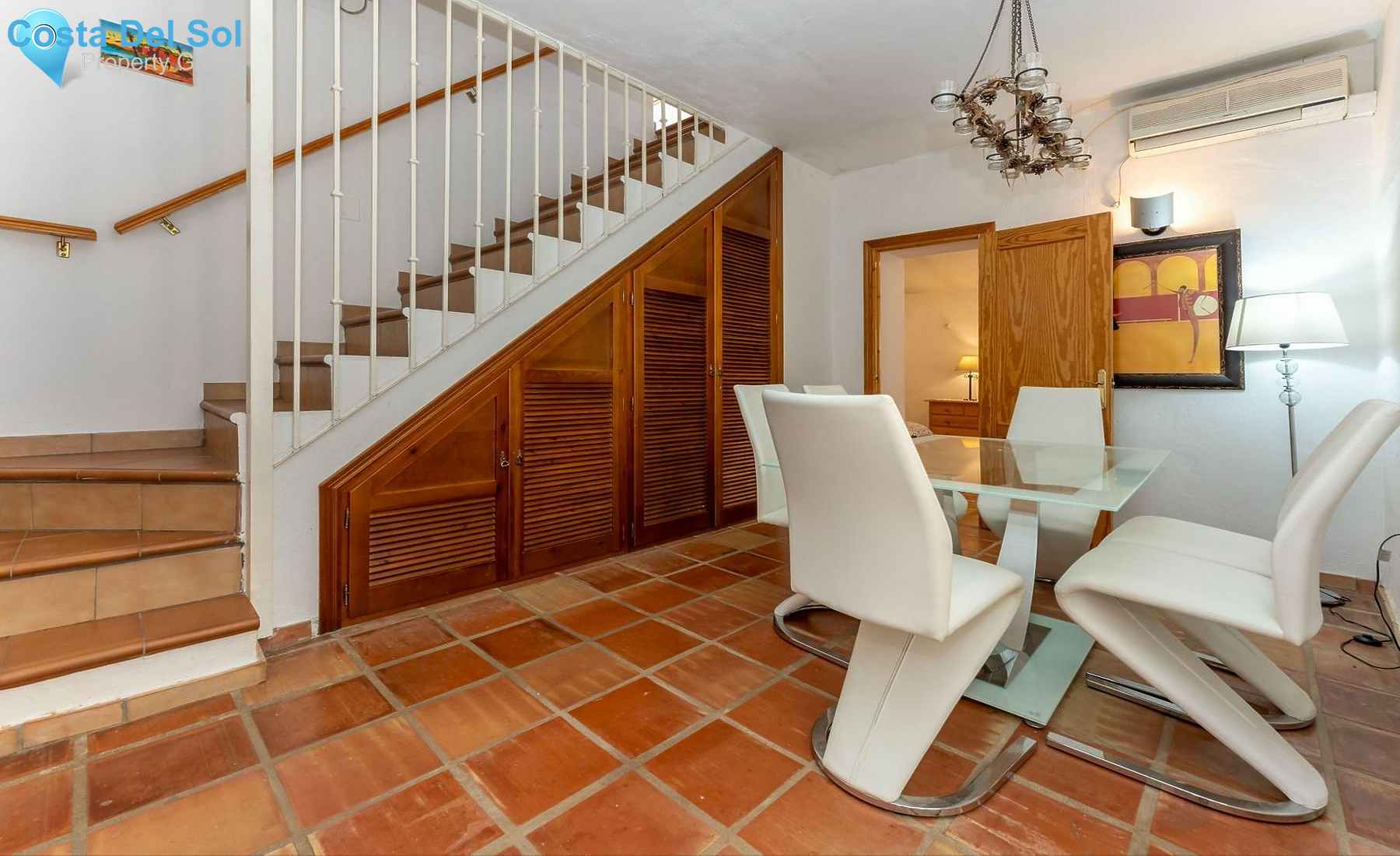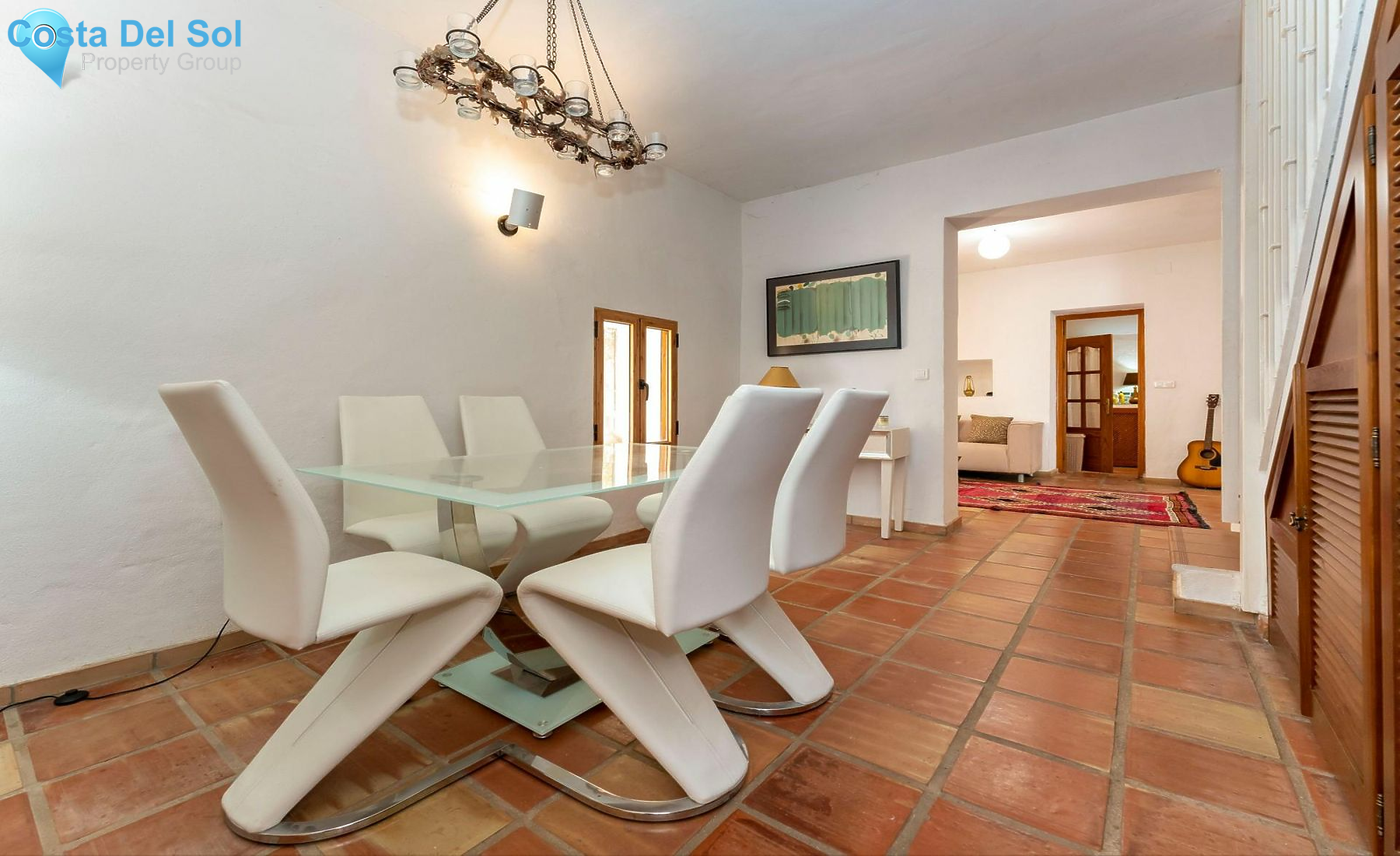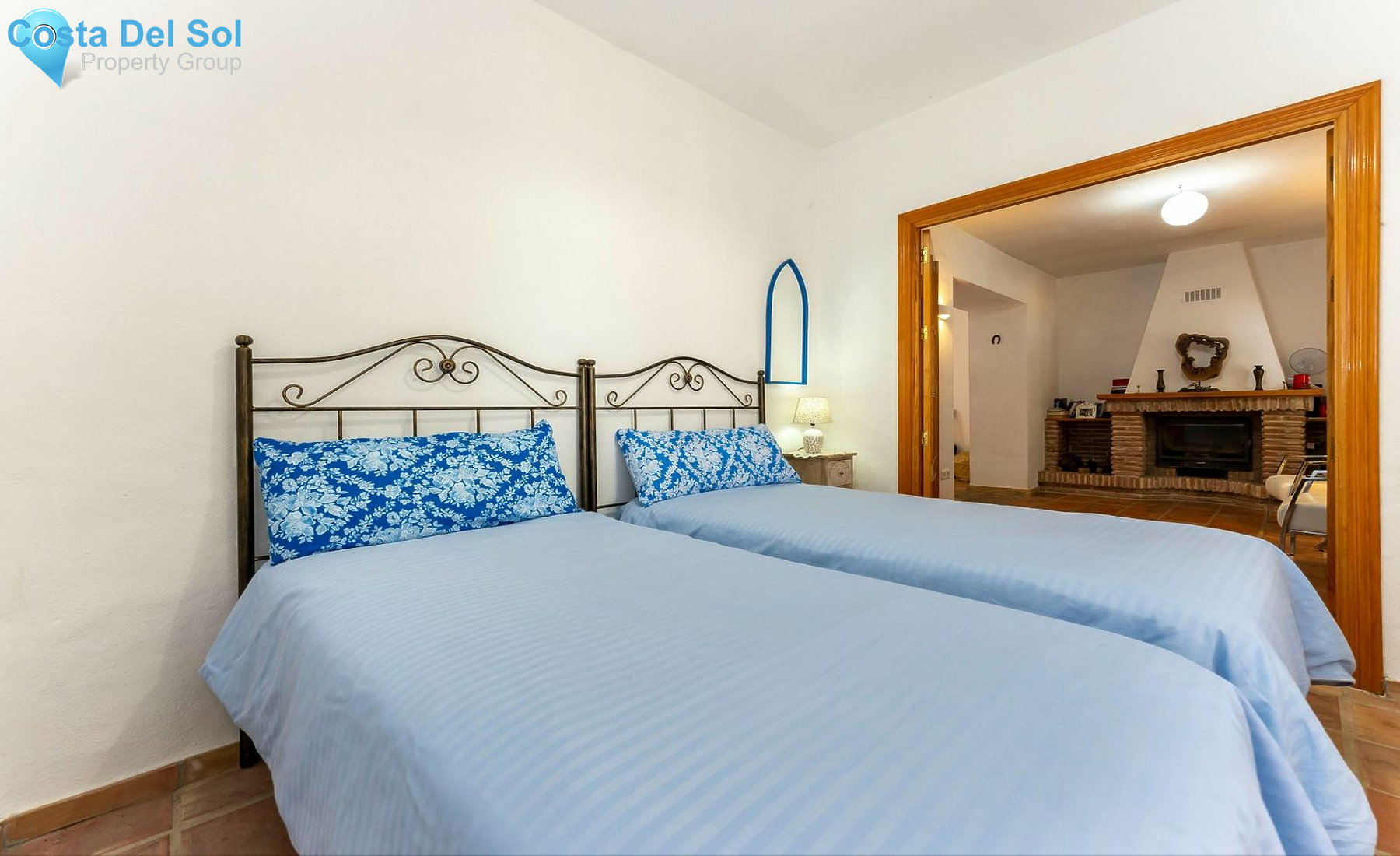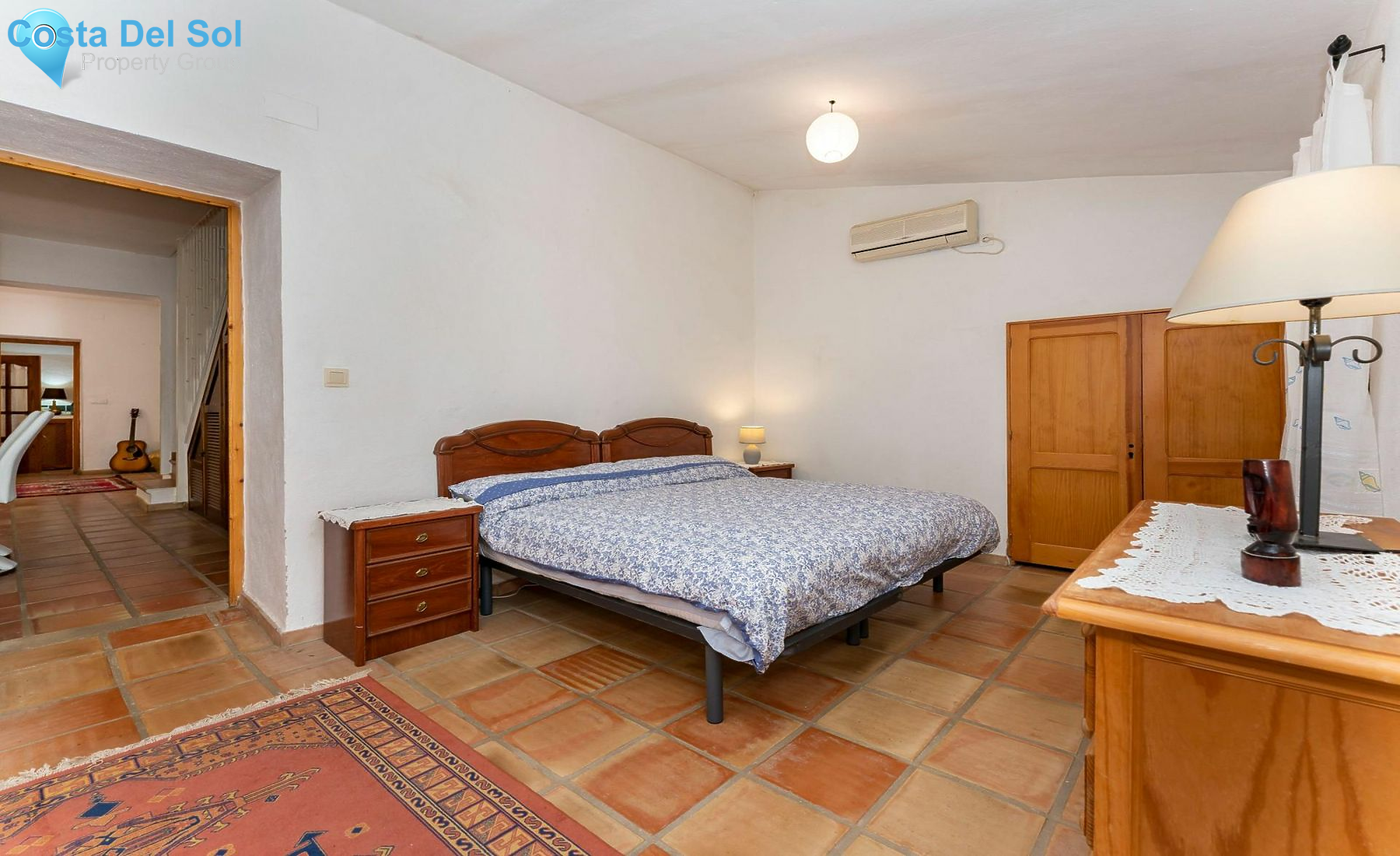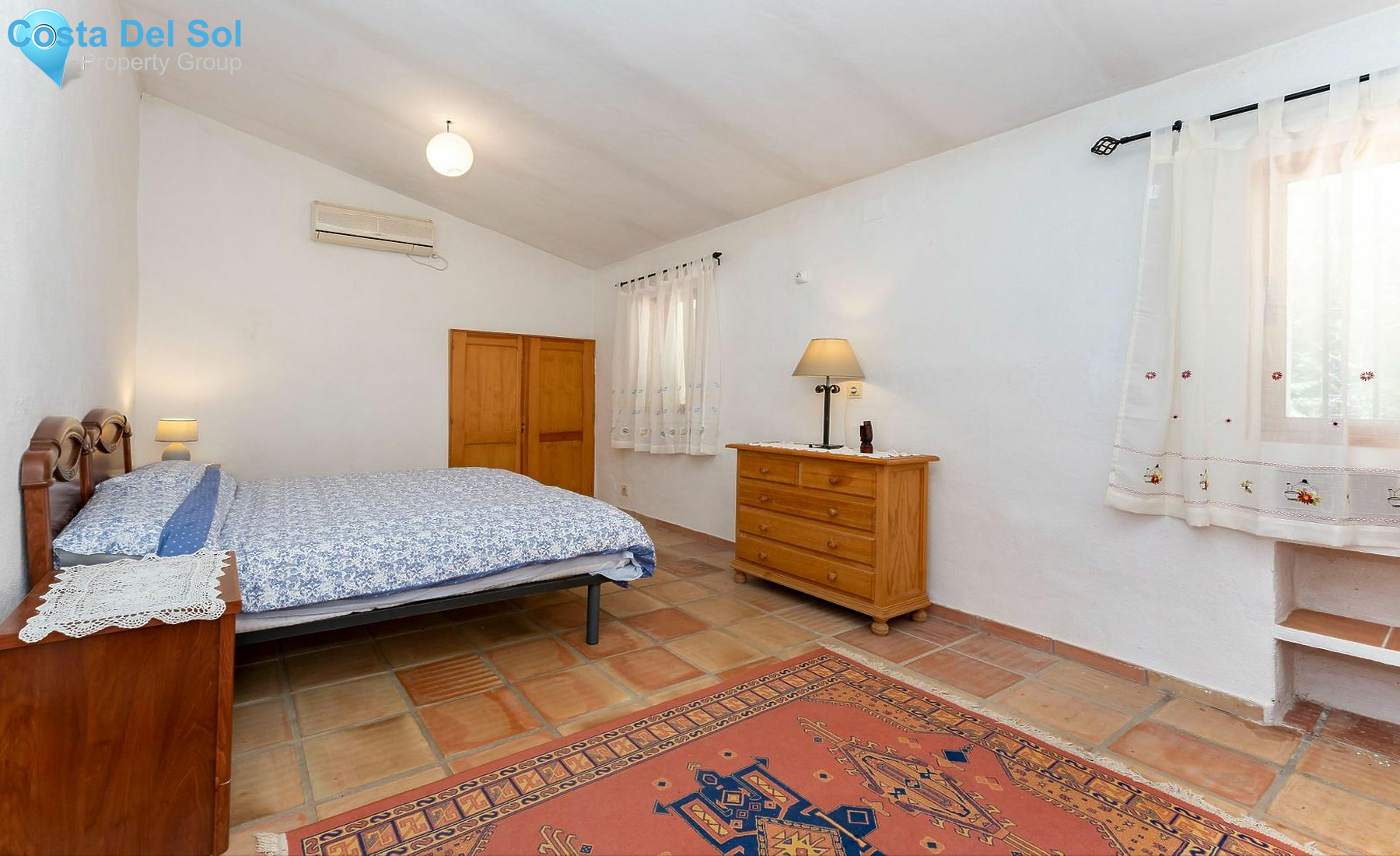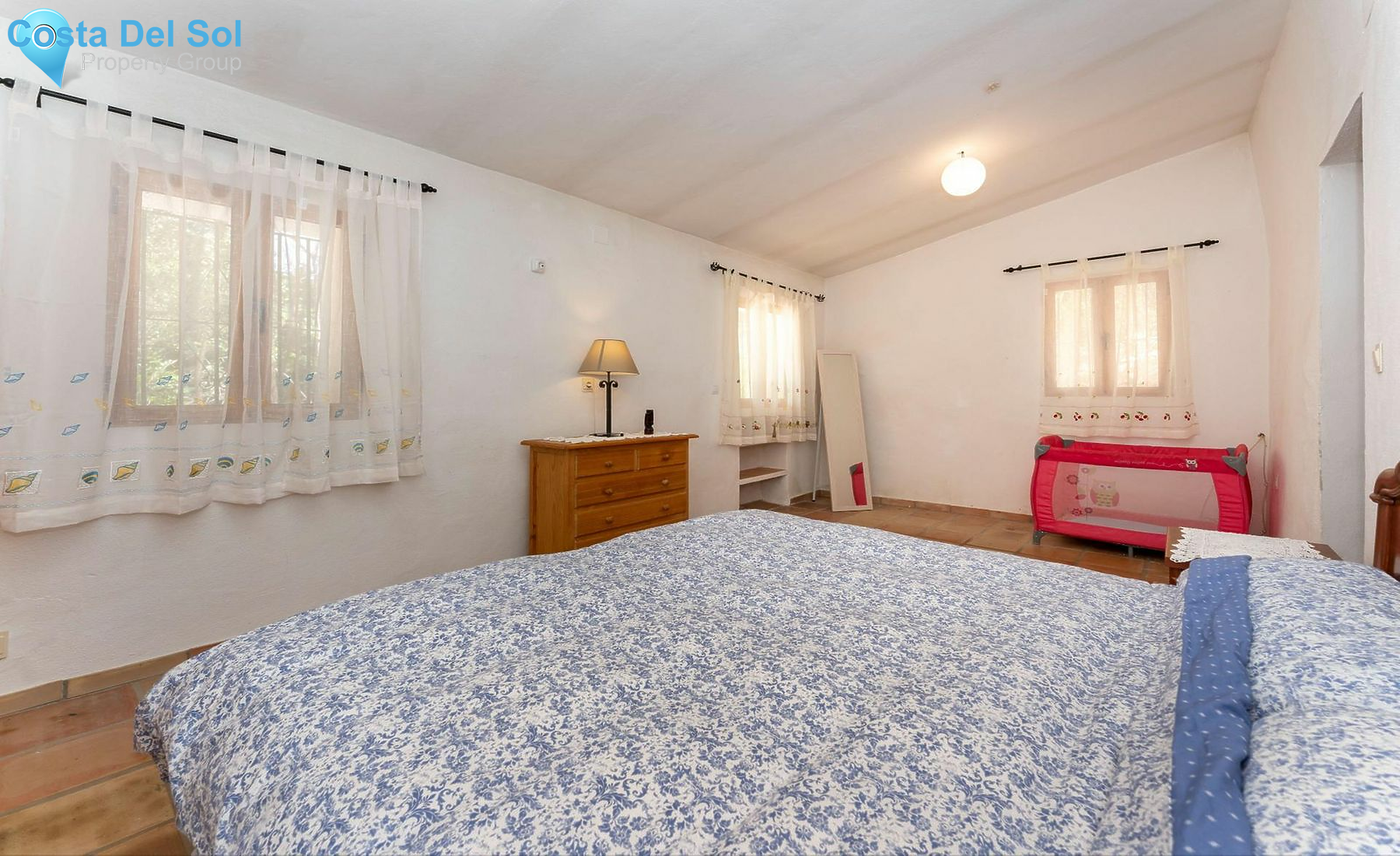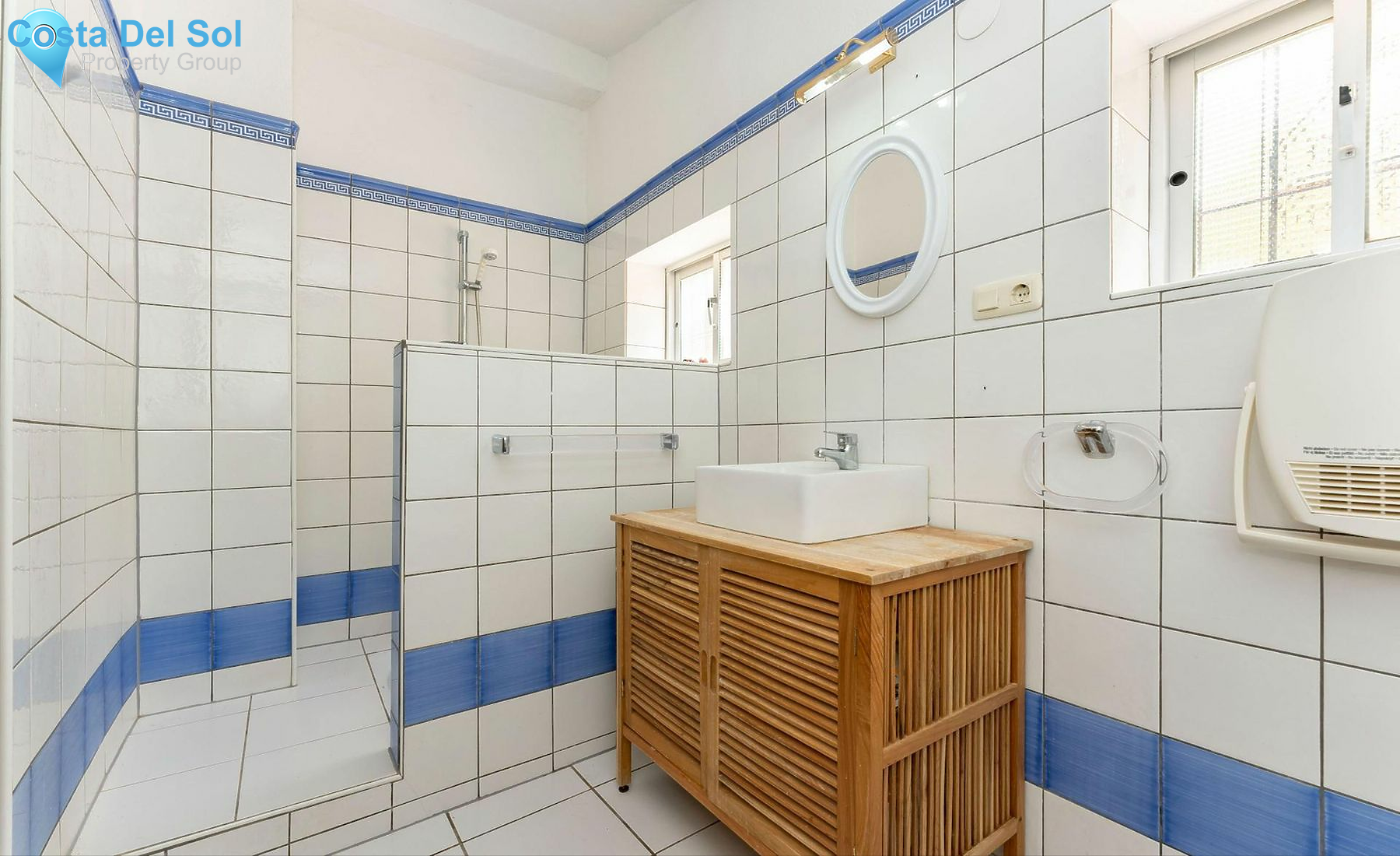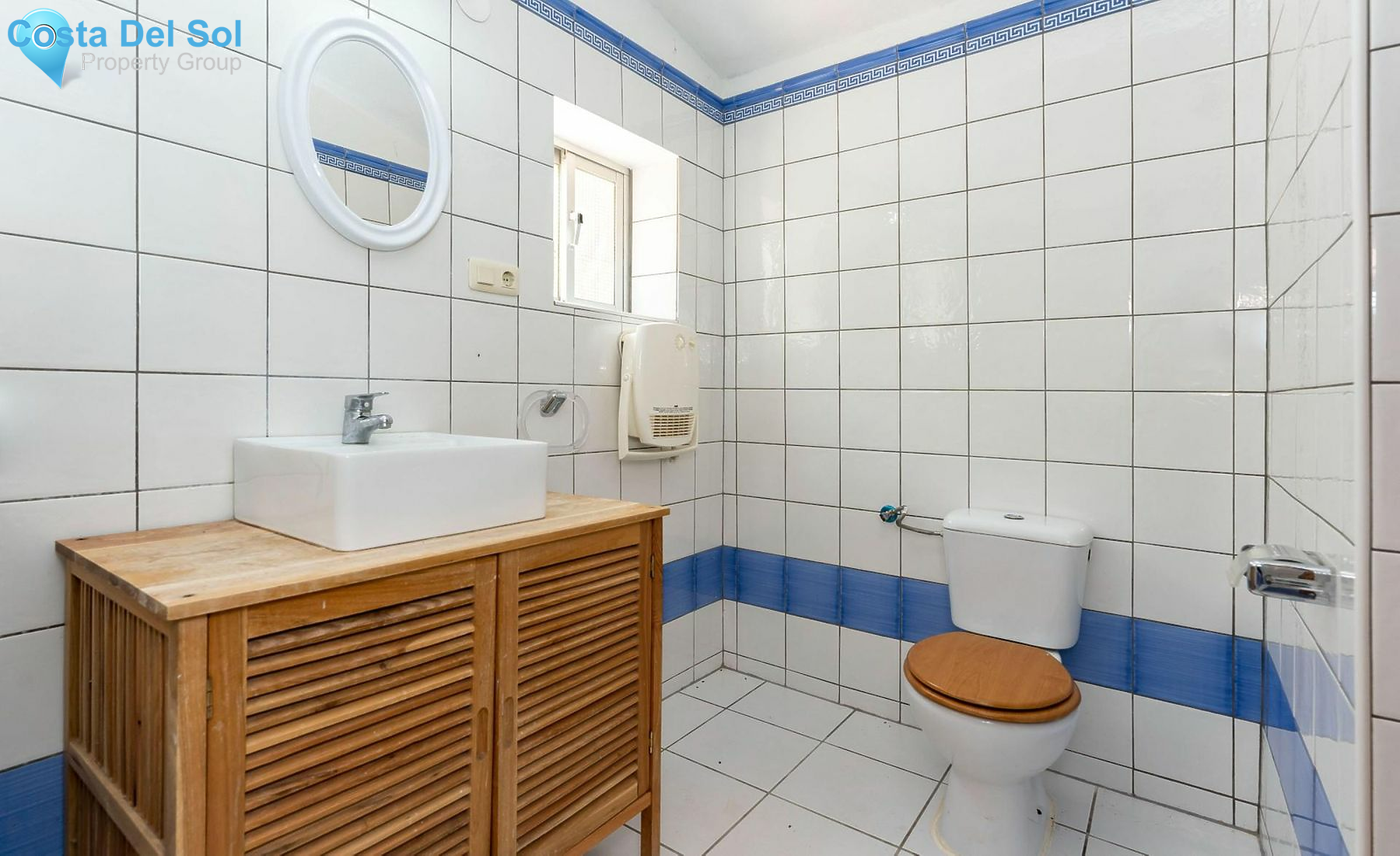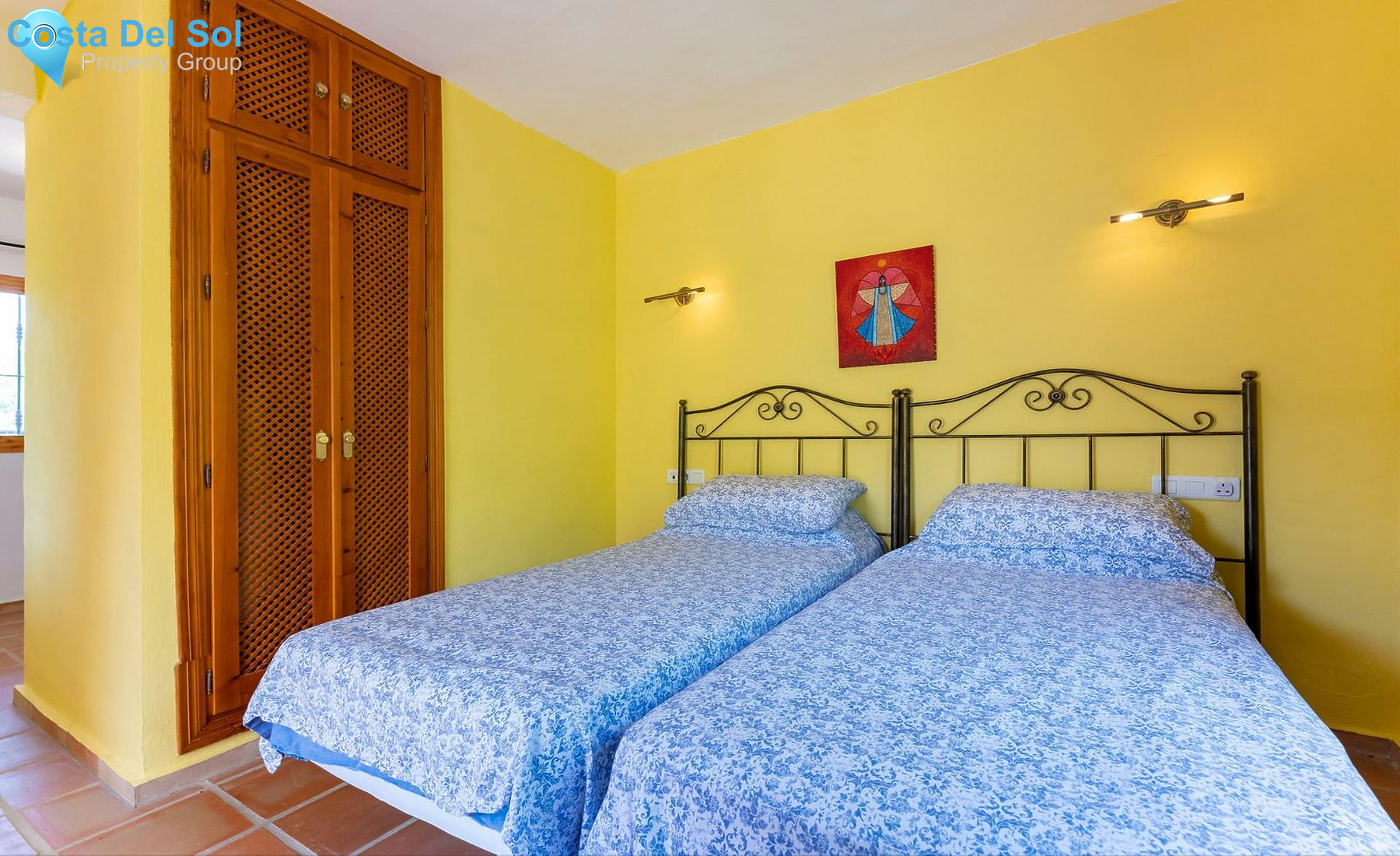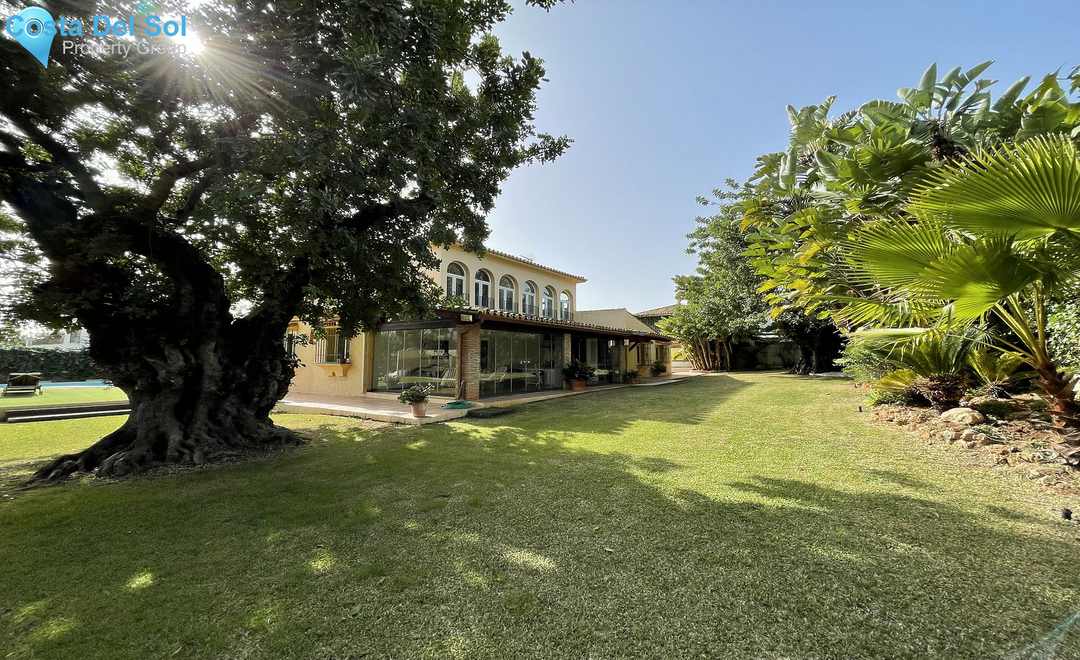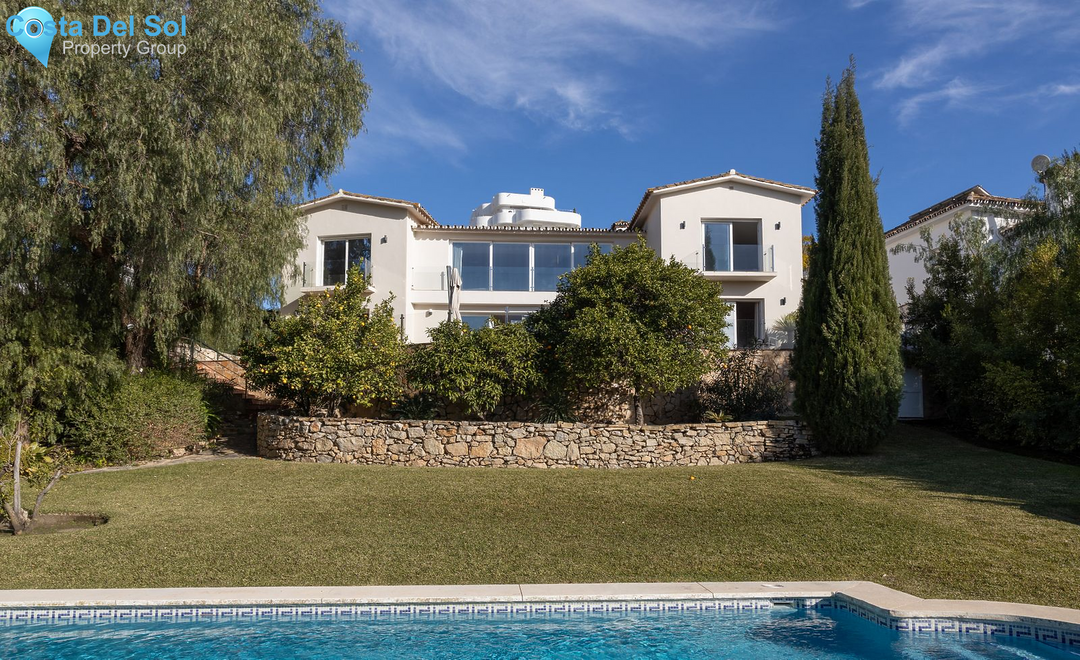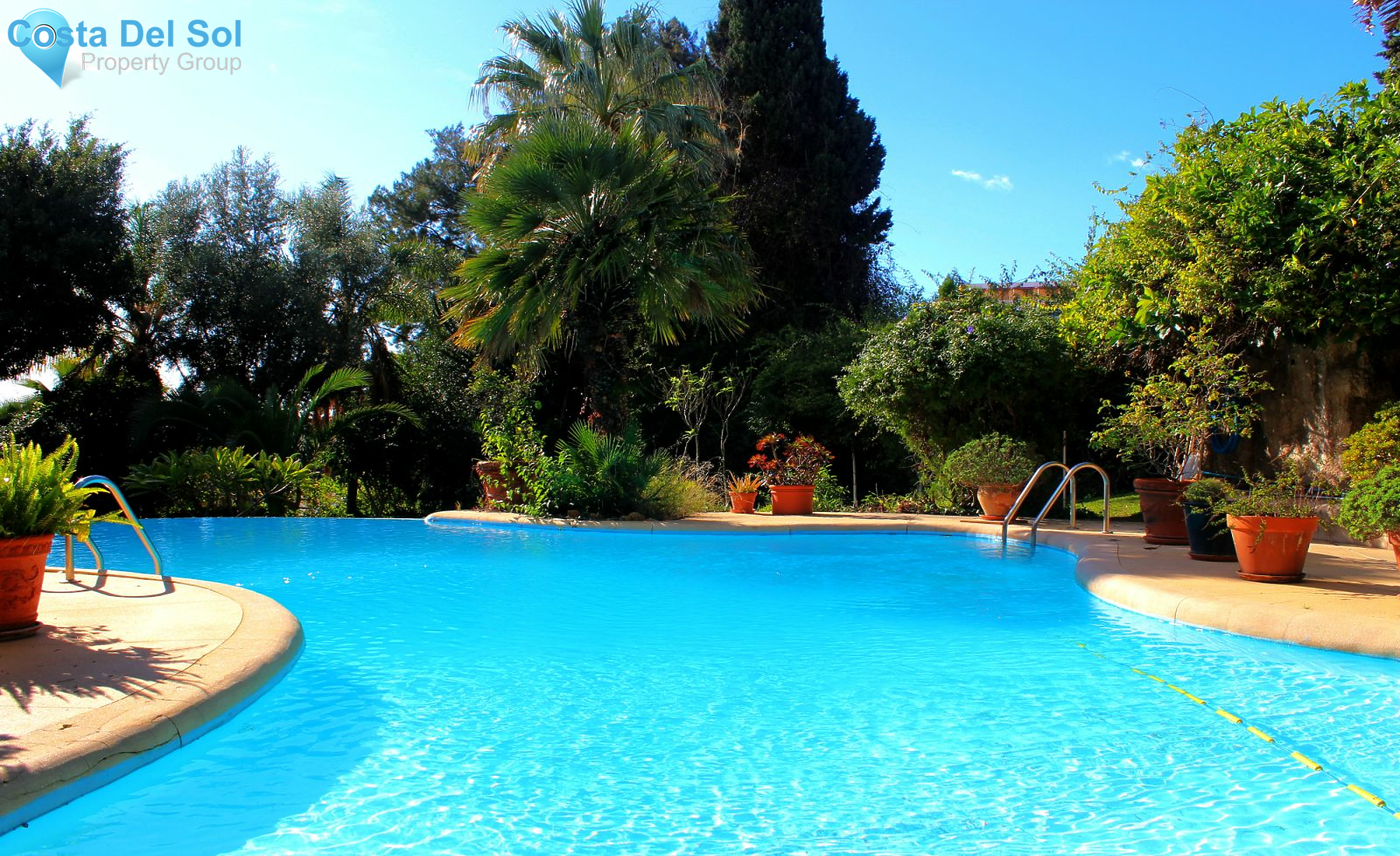Property details
- Property ID: CDS29376
- Price: € 299,000
- Plot Size: 12880 m2
- Built Size: 265 m2
- Terrace Size: 0 m2
- Bedrooms: 4
- Bathrooms: 3.5
- Property Type: Detached Villa
Notice: Trying to access array offset on value of type bool in /var/www/clients/client5/web6/web/property.php on line 328
Notice: Trying to access array offset on value of type bool in /var/www/clients/client5/web6/web/property.php on line 328
- Kitchen: Fully Fitted
- Pool: Private
- Views: Mountain,Country,Courtyard
- Garden: Private
- Parking: Garage,More Than One,Private
- Furniture: Optional
Setting
- Country,Mountain Pueblo
Description
The last property on the lane.
Accessed down a solid track with no passing traffic, it's not very often you find a traditional finca in excellent condition, in a peaceful setting such as this.
The property is nestled within a large plot of over 12,000m2.
Full of rustic charm, perfect for those seeking peace and tranquillity in the heart of the foothills of Pizarra and Alora.
You enter the plot through wrought iron gates into a spacious parking area with ample parking for 10 + cars.
A cobbled drive welcomes you to the Finca.
To the right a garage, and to the left a separate guest annex, surrounded by tall trees and lush vegetation offering shade on those hot summer days.
An impressive grapevine covers the front terrace of the finca, the perfect spot to enjoy your morning coffee.
You enter through traditional wooden doors and directly into a large open plan living and dining area with feature fireplace.
To the left there is a bedroom/study.
Follow through to the heart of the finca and you will note a spacious double bedroom beyond the dining area.
The kitchen is rustic in charm with custom made stone sink, fully fitted and with a separate utility room.
Furthermore, on this floor there is a family shower room.
Upstairs you will find the master suite and a bathroom with access onto a terrace with stunning views to the pool beyond.
Outside you have a lovely one bedroom with ensuite guest room, independent from the house.
The pool area is spectacular, with a 10 x 5-meter pool, outdoor kitchen, and ample space to entertain guests.
Slightly elevated above the pool area you will also find a cosy sun terrace.
This is a lovely property in a stunning location, a short 9-minute drive to the nearest restaurant, full of rustic charm with private well, hot cold air conditioning, open fireplace, and potential for holiday lets.
Viewings highly recommended.
PIZARRA
Pizarra is a tiny town lying 30 kilometres inland from Malaga in the Guadalhorce valley at the foot of the Sierra del Haco; the town is within easy reach of the capital and its international airport.
It is also situated on the local railway line between Alora and Malaga and has managed to retain much of its old character charm, avoiding excessive development.
Although on the surface Pizarra appears to be a laidback white village, scratch the surface and you will find a surprising number of cafes, bars and restaurants.
There is of course typical Malagueñan cuisine on offer, tapas, seafood, etc, but you will also find restaurants serving British, French and Italian food and even more astonishing are the options for a night filled with music and dance, with several nightclubs and disco bars in the town where you can have a great night out, Andalusian-style.
Pizarra also has a Municipal Museum which was created to exhibit the archaeological findings of the American painter Gino Hollander, who lived in the village for many years.
When he left Pizarra to return to America he left the impressive collection to the local town.
The Church of San Pedro, Palacio de los Condes de Puerto Hermoso (the Palace of the Counts of Puerto Hermoso), Hermanas de la Cruz convent and Nuestra Señora de la Fuensanta hermitage area also worth a visit.
The town enjoys the sub-tropical Mediterranean climate, with hot summers and warm winters.
Divided from the sea by the mountains means the heat can soar in summer, but it remains comfortable for the most part.
Temperatures are an average of 32 ºC in summer
Features
- Covered Terrace,Fitted Wardrobes,Private Terrace,Guest Apartment,Utility Room,Ensuite Bathroom
Property video
Location
- Area: Málaga
- Town: Pizarra
Current Weather in Pizarra
About:
Pizarra is a town and municipality in the province of Málaga, part of the autonomous community of Andalusia in southern Spain.
The municipality is situated approximately 30 kilometres from Málaga.
It is located in the center of the province and belongs to the comarca of Valle del Guadalhorce.
The town is served by the Málaga Metropolitan Transport Consortium Metropolitan bus lines.
The municipality of Pizarra is located in a strategic area in the Guadalhorce Valley region, between Álora and Cártama.
It is 10 km from Álora and around 13 km from Cártama.
Pizarra is crossed by the Guadalhorce River along 8.5 kilometres (which has a width of 11.5) and 8 km, from east to west and from north to south, respectively.
Pizarra is also surrounded by Almogía, Cártama, Coín, Álora, and Casarabonela .
It is located 80 meters above sea level.
Its highest point is in the Sierra de Gibralmora, 447 meters above sea level, which offers, on the side facing Pizarra, a unique landscape of sandstone rocks that is made spectacular by some of the shapes that this rock presents at the top.
Pizarra is very well connected to its capital, Málaga, which is 30 km away and can be reached from the town by road, bus or rail.
Pizarra is a municipality dedicated to irrigation, as it has a municipal surface area of just over 64 km² dedicated to this.
The local products of the land are typical of the Guadalhorce Valley, as are the neighbouring towns.
In dry land, the most important crops are olive and almond trees, and to a lesser extent, but no less important, cereals and legumes.
As for irrigated land, lemon and orange trees predominate.
In the western half of the area, the new irrigation systems of the Guadalhorce have transformed the small hills and undulating terrain into terraces where citrus fruits, subtropical crops and other fruit trees are grown, completing and enhancing the landscape of traditional orchards.
Centuries-old carob trees, olive trees, fig trees, almond trees, walnut trees and fruit trees beautify the landscape all year round.
Drinking water comes from the high mountains, which are rich in streams.
Land ownership, on the other hand, is more concentrated here, which produces a high number of temporary workers, seasonal workers who depend on the harvest season, and others to a lesser extent who are self-employed.
On the other hand, there is little incidence of agricultural cooperatives.
In livestock farming, the most prominent are chicken and pig farms.
Hence, there are feed and flour factories, as well as some textile cooperatives and metal carpentry workshops.
The construction sector is more dynamic than the industrial sector.
The tertiary sector employs a quarter of the population.
This is where the future of these towns lies, through the symbiosis of nature, work and services.
In recent years, rural tourism has become more important.
Taxes & Fees
Notice: Trying to access array offset on value of type bool in /var/www/clients/client5/web6/web/Global-Includes/footer.php on line 1
File does not exist. "https://costadelsolpropertygroup.com/propertyVideos/noVideo.mp4"
